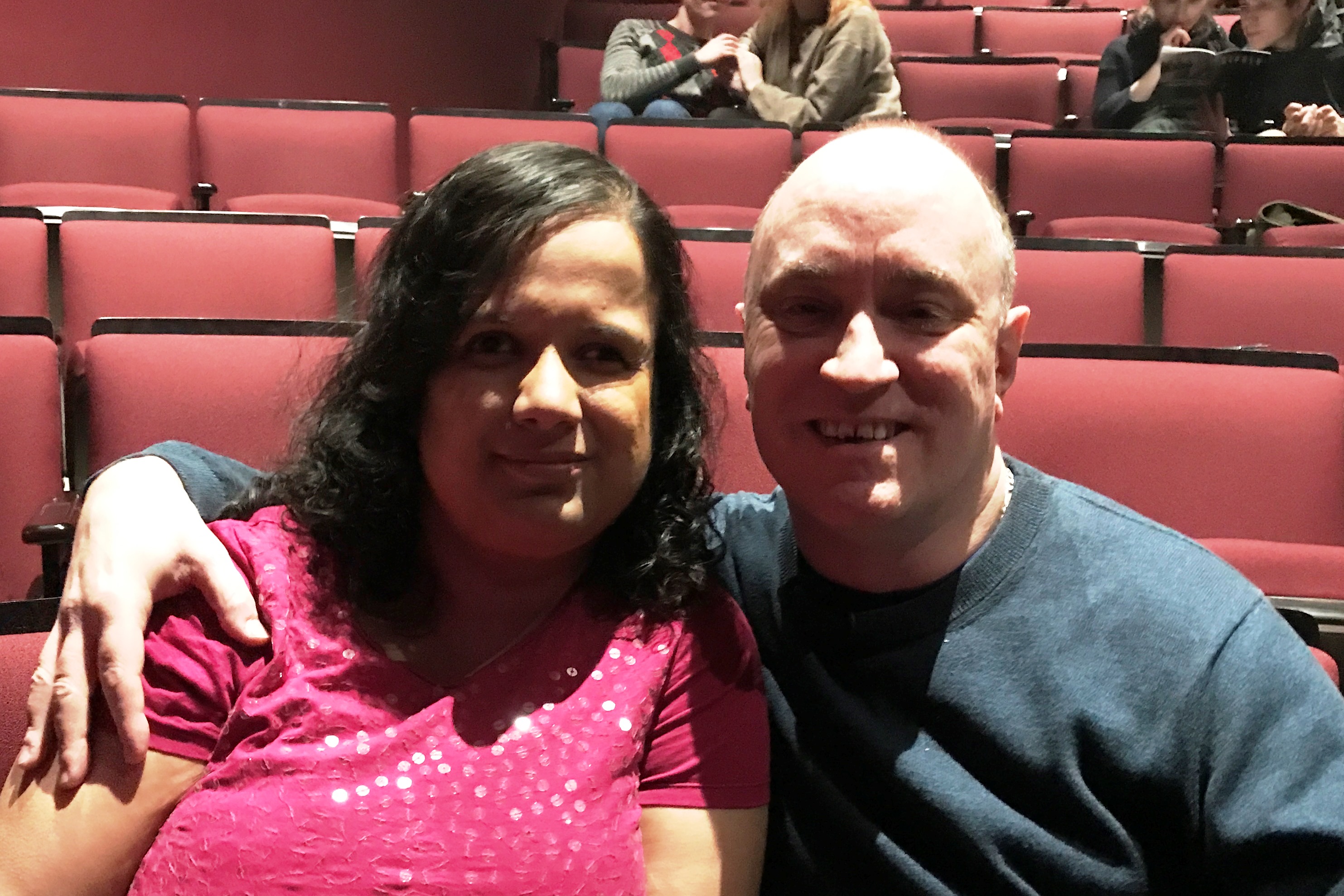Empowerment. Engagement. Authenticity.
VocalEye Described Performance - Cipher
Cipher was supposed to be the first VocalEye
described performance of 2020 for my boyfriend, Shawn, And I. When we
first saw the description on the VocalEye Calendar of Events, we were
pretty excited. I mean, I love theatre and will pretty much give any
production consideration, especially if it's described for people with
vision loss. Shawn is way more selective. His refusal came quick and
adamant when I begged to attend Christmas at Pemberley.
Pride and Prejudice? No. A thriller based on a cold case? Yes.
As it was, Cipher was our fourth described performance of this brand new
year, this brand new decade, I suppose. We'd immersed ourselves in
everything from Caribbean politics and superstitions, to post-rock
modern dance to First Nations reconciliation. Shawn, a programmer, had
been a very good sport with all the interpretive content.
My literary mind assuaged, I didn't mind sitting through a good
old-fashioned murder mystery with him.
My first inkling that this murder mystery would not unfold like the Law
and Order episodes Shawn and I both enjoy was when our describer,
Ingrid, identified the different modes of storytelling the production
involved.
Having now read the Wikipedia article on Film Noir, I understand why Ingrid included this detail in her pre-show notes. For those who have never attended a theatre performance described for people with vision loss, the pre-show notes familiarize patrons with the set, the characters and the costumes among other visual elements. For patrons who can't see, it is important, for example, to know that the plot can shift from present to past by virtue of movement rather than language. Ingrid alerted us to the fact that the action would shift from present day to 1956, the year of the, as yet, unsolved murder.
Hearing this, I immediately envisioned cues of light or sound as transitions. Perhaps a flash would transport the audience between eras. Or maybe Celine Dion would mix into Paul Anka to set the difference in scene. As I said, I've watched my share of Law and Order and these are the techniques with which I'm familiar. I expected clean-cut definitions between the past and the present.
Here's where some background on film noir would have been a useful addition to the pre-show notes. Apparently, flashbacks and other techniques – movement and mime in the case of Cipher – are sprinkled throughout a production to inject suspense or comedy. There were scenes in Cipher where the two main characters, Grace and Aqeel, were theorizing or catastrophizing on one side of the stage while the ambiguously-named "body" dramatized their brainstorm. Ingrid was right on the mark describing this. However, at other times, Ingrid drew our attention only to the interaction between Grace and Aqeel, even though the body was on stage or darting in and out of view.
If, like Shawn, you can't discern the people on stage, "the body" doing its thing isn't a distraction. Through your earpiece, Ingrid is telling you about Grace and Aqeel and that is your focus.
If, like me, you have some usable vision and an overactive literary brain, or are just curious as to why there's unexplained movement in your periphery, the lack of audio description throws you for a loop.
Live audio description is a fine balance, I imagine. Not only does the describer have to slip narration in between gaps in dialogue or over loud music, but they must tread the line between information overload and relaying to patrons with vision loss what sighted audience members are seeing.
So perhaps a bit of background on the elements of film noir during the pre-show notes might have helped? Something like…"It is useful to know that the body appears and disappears from time to time during the play. This is meant to keep the audience on the edge of their seats. The describer will try their best to narrate every glimpse but this may not always be possible. Also important to know is that the mimes of the body and his secret lover start off as dramatizations of the main characters' dialogue but, gradually, both the main characters and the pantomime fall into sync. This means that, in many instances, the main characters and the pantomime are occurring in tandem."
I am not a describer and, in fact, regard live description as its own intricate choreography. Some theatre productions lend themselves more easily to being described for patrons with vision loss. This by no means excludes more complex dramas. Making the performance arts accessible to the blind and low vision community has pushed and surpassed multiple boundaries over the past ten years, ever since VocalEye Descriptive Arts made this their mission. The question is no longer, "Should this production be made accessible to those without sight?" Instead, the question has become a welcomed challenge: "How can this production be made accessible to those without sight?"
It can be done. I have witnessed the proof.




